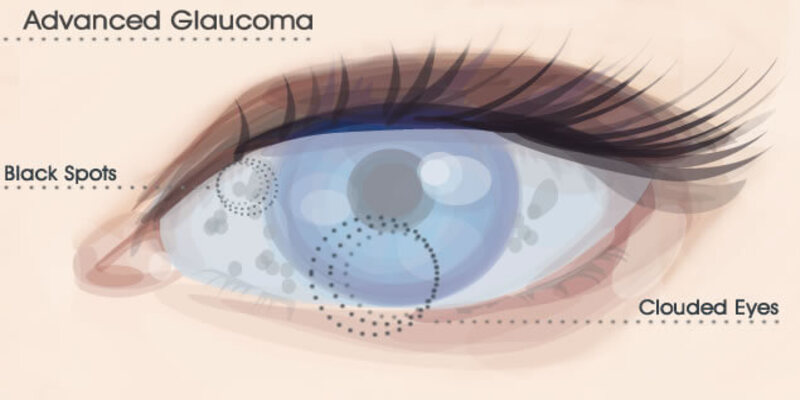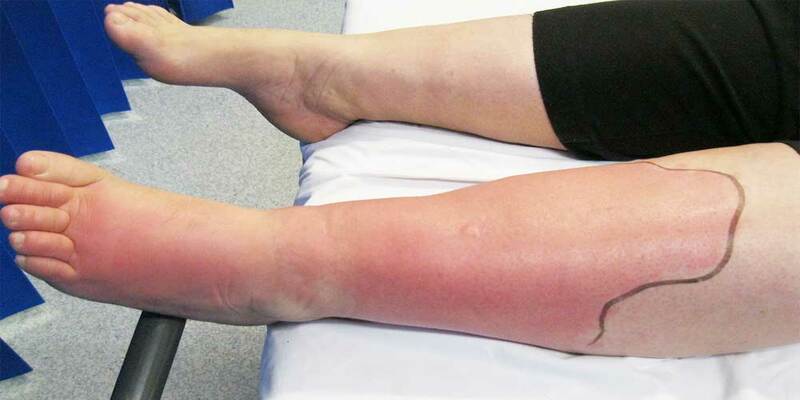Several eye diseases, collectively known as glaucoma, cause dysfunction of the optic nerve, which transmits visual information from the eye to the brain. Elevated intraocular pressure is a common cause of this condition (intraocular pressure). Without treatment, glaucoma may destroy sight completely. Sometimes, glaucoma doesn't even cause any symptoms in its early stages. Therefore, it is crucial to schedule frequent eye examinations since glaucoma may be diagnosed and treated before any vision loss occurs during a thorough examination of the eyes. The relative rise in intraocular pressure (IOP) that may result in permanent vision loss is a hallmark of glaucomas, a group of eye illnesses defined by progressive optic nerve injury. Glaucoma is the major cause of blindness among persons of African ancestry and Hispanic ancestry in the United States and the second most prevalent cause of blindness globally.
What Are The Symptoms Of Glaucoma?
When glaucoma first develops, it often has no noticeable symptoms. It often worsens gradually over many years, starting with peripheral vision. Because of this, glaucoma is frequently not diagnosed until a person has a normal eye exam. If you have symptoms, you may notice halos around lights or hazy vision. Although generally affecting both eyes, it may sometimes be more severe in one.
Extremely rarely, glaucoma may appear out of nowhere and result in:
- Irreparable eye damage
- symptoms of nausea and vomiting
- eye redness
- I've got a headache
- delicateness in the ocular area
- Observing Light Circularity
- hazy perception
Pathophysiology Of Glaucoma

Retinal ganglion cell axons transmit visual data from the eye toward the brain through the optic nerve. Ganglion oxidative damage, optic nerve atrophy, and localized vision loss are all the consequences of damage to these axons. Increased IOP may cause axonal injury by directly compressing nerves or reducing blood flow. The normal range of IOP is 11–21 mm Hg in healthy eyes. Pressure measured from the outside may be misleading due to the complexity of the link between pressure and nerve injury. Glaucoma affects only approximately 1% to 2% of persons annually (about 10% over five years) who have intraocular pressure (IOP) greater than 21 mm Hg (ocular hypertension). In addition, nearly a third of glaucoma patients do not have IOP >'' 21 mm Hg (known as low-tension glaucoma or normal-tension glaucoma). Perhaps the cornea is thinner than usual, which contributes to the fact that the outwardly measured IOP does not always match genuine IOP.
When To Go To The Doctor
If your eyesight is bothering you, see a doctor or optometrist. Early detection and treatment of glaucoma may prevent further loss of vision. Glaucoma may cause blindness if not treated. When glaucoma symptoms suddenly appear, you need to go to an eye casualty unit or emergency room at once. There may be a need for rapid medical attention. Different Forms of GlaucomaThe eye disease glaucoma comes in a few distinct forms. Primary open-angle glaucoma constitutes the most typical kind. This is something that usually takes a long time to manifest itself. It's brought on by a slow but steady debris buildup in the eye's drainage system.
Additional glaucoma subtypes include:
- Acute angle closure glaucoma is a rare disease in which the eye's drainage channels close abruptly, leading to a sharp increase in intraocular pressure.
- Glaucoma that is secondary or brought on by something else, such as eye irritation or trauma (uveitis)
- Congenital glaucoma, often known as childhood glaucoma, is an extremely uncommon disease that affects children's eyes.
What Causes Glaucoma?

Multiple factors contribute to the development of glaucoma. Most occurrences result from increased intraocular pressure brought on by blocked tear ducts. The pressure within the eyeball rises, causing harm to the optic nerve that travels to the brain (optic nerve). It's not always apparent what causes this, but several factors boost the odds:
- Your age - glaucoma is more prevalent in elderly populations.
- Your racial or ethnic background; those of African, Caribbean, or Asian descent are more likely to get the disease.
- Factors in your history, such as having a parent or brother with glaucoma, increase your risk of developing the disease.
- various health issues, such as myopia, hyperopia, or diabetes
Conclusion
The optic nerve may be damaged by glaucoma, a set of eye disorders. The optic nerve is critical for seeing clearly because it transmits visual data from the eye to the brain. High intraocular pressure is a common cause of damage to the optic nerve. However, glaucoma may occur in people with normal eye pressure. Although it is more frequent among the elderly, glaucoma may affect people of any age. Among those over the age of 60, it accounts for a significant percentage of cases of blindness.
In many cases of glaucoma, no symptoms will ever appear. The impact is so subtle that you may not notice a difference in your eyesight until the disease is advanced. Having your eye pressure checked regularly is essential to any comprehensive eye checkup. In many cases, vision loss from glaucoma may be reduced or even avoided if the disease is diagnosed in time.




